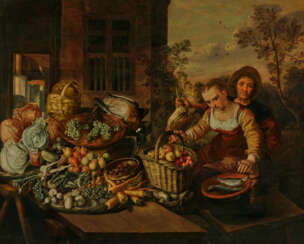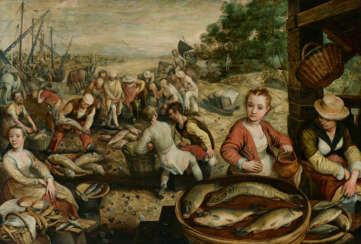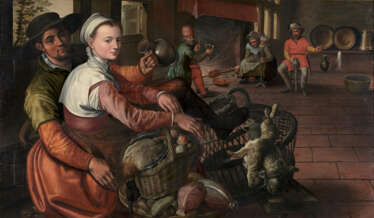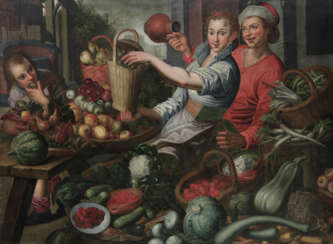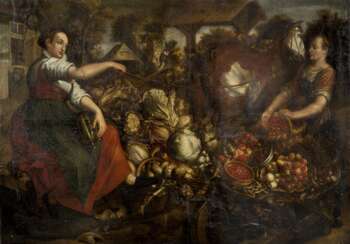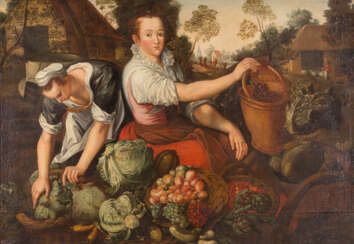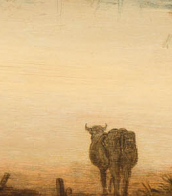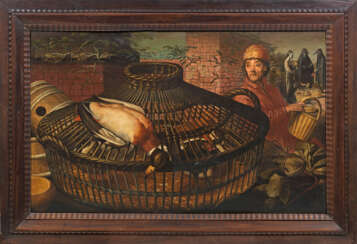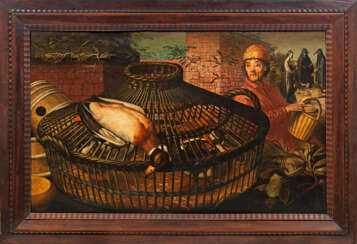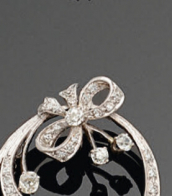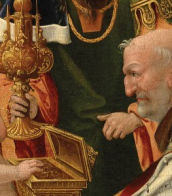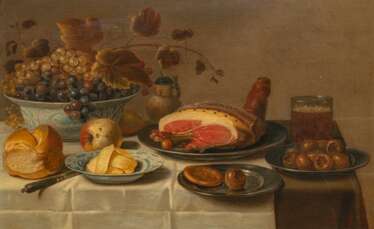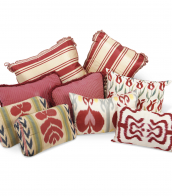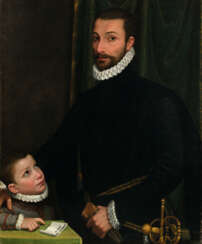joachim beuckelaer
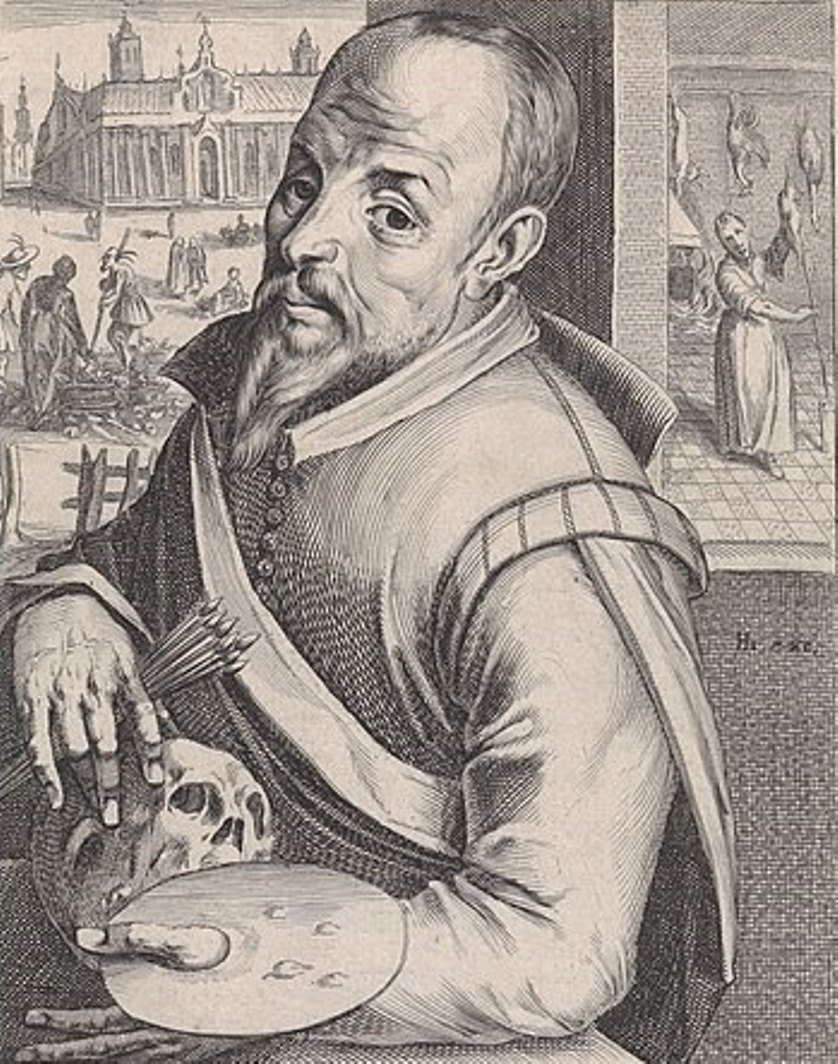
Joachim Beuckelaer, a masterful Flemish painter born around 1533, was renowned for his intricate market and kitchen scenes, which were abundant with detailed depictions of food and household items. His unique approach combined everyday life with religious narratives, often situating biblical episodes within the backdrop of bustling market scenes or domestic settings. This innovative blend of the mundane with the spiritual set the stage for future developments in Dutch and Flemish painting.
Beuckelaer's influence extended beyond his immediate geographic locale, impacting artists across Europe, from Italy to Spain, heralding a new appreciation for kitchen and market scenes that would flourish in seventeenth-century painting. His works were not only appreciated for their aesthetic and technical mastery but also for their ability to capture the essence of sixteenth-century Antwerp life, from the vibrancy of its markets to the intimacy of its kitchens.
His oeuvre includes a variety of subjects, from purely religious works to those that focus solely on still-life elements without any human figures, indicating his versatility and innovation as an artist. Beuckelaer was known for employing techniques that allowed him to efficiently reuse compositions, showcasing his ability to adapt and repurpose his work to meet the demands of his patrons.
Notable works by Beuckelaer, such as the "Four Elements" series, now housed in the National Gallery, London, demonstrate his skill in merging complex allegories with detailed observations from nature and daily life. These paintings are celebrated for their depth of detail and the way they foreground the role of women in the culinary and market spheres.
For collectors and experts in art and antiques, Joachim Beuckelaer's paintings offer a fascinating glimpse into the cultural and social dynamics of the sixteenth century, as well as the evolution of still-life and genre painting in the early modern period. His ability to weave together the secular and sacred, the abundant and the everyday, marks him as a significant figure in the history of art.
To remain informed about the latest discoveries, sales, and auction events related to Joachim Beuckelaer, consider signing up for updates. This subscription is an invaluable resource for those keen to explore the depths of Flemish painting and its enduring influence on European art history.


Joachim Beuckelaer, a masterful Flemish painter born around 1533, was renowned for his intricate market and kitchen scenes, which were abundant with detailed depictions of food and household items. His unique approach combined everyday life with religious narratives, often situating biblical episodes within the backdrop of bustling market scenes or domestic settings. This innovative blend of the mundane with the spiritual set the stage for future developments in Dutch and Flemish painting.
Beuckelaer's influence extended beyond his immediate geographic locale, impacting artists across Europe, from Italy to Spain, heralding a new appreciation for kitchen and market scenes that would flourish in seventeenth-century painting. His works were not only appreciated for their aesthetic and technical mastery but also for their ability to capture the essence of sixteenth-century Antwerp life, from the vibrancy of its markets to the intimacy of its kitchens.
His oeuvre includes a variety of subjects, from purely religious works to those that focus solely on still-life elements without any human figures, indicating his versatility and innovation as an artist. Beuckelaer was known for employing techniques that allowed him to efficiently reuse compositions, showcasing his ability to adapt and repurpose his work to meet the demands of his patrons.
Notable works by Beuckelaer, such as the "Four Elements" series, now housed in the National Gallery, London, demonstrate his skill in merging complex allegories with detailed observations from nature and daily life. These paintings are celebrated for their depth of detail and the way they foreground the role of women in the culinary and market spheres.
For collectors and experts in art and antiques, Joachim Beuckelaer's paintings offer a fascinating glimpse into the cultural and social dynamics of the sixteenth century, as well as the evolution of still-life and genre painting in the early modern period. His ability to weave together the secular and sacred, the abundant and the everyday, marks him as a significant figure in the history of art.
To remain informed about the latest discoveries, sales, and auction events related to Joachim Beuckelaer, consider signing up for updates. This subscription is an invaluable resource for those keen to explore the depths of Flemish painting and its enduring influence on European art history.
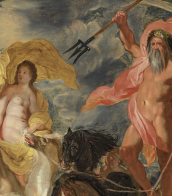

Joachim Beuckelaer, a masterful Flemish painter born around 1533, was renowned for his intricate market and kitchen scenes, which were abundant with detailed depictions of food and household items. His unique approach combined everyday life with religious narratives, often situating biblical episodes within the backdrop of bustling market scenes or domestic settings. This innovative blend of the mundane with the spiritual set the stage for future developments in Dutch and Flemish painting.
Beuckelaer's influence extended beyond his immediate geographic locale, impacting artists across Europe, from Italy to Spain, heralding a new appreciation for kitchen and market scenes that would flourish in seventeenth-century painting. His works were not only appreciated for their aesthetic and technical mastery but also for their ability to capture the essence of sixteenth-century Antwerp life, from the vibrancy of its markets to the intimacy of its kitchens.
His oeuvre includes a variety of subjects, from purely religious works to those that focus solely on still-life elements without any human figures, indicating his versatility and innovation as an artist. Beuckelaer was known for employing techniques that allowed him to efficiently reuse compositions, showcasing his ability to adapt and repurpose his work to meet the demands of his patrons.
Notable works by Beuckelaer, such as the "Four Elements" series, now housed in the National Gallery, London, demonstrate his skill in merging complex allegories with detailed observations from nature and daily life. These paintings are celebrated for their depth of detail and the way they foreground the role of women in the culinary and market spheres.
For collectors and experts in art and antiques, Joachim Beuckelaer's paintings offer a fascinating glimpse into the cultural and social dynamics of the sixteenth century, as well as the evolution of still-life and genre painting in the early modern period. His ability to weave together the secular and sacred, the abundant and the everyday, marks him as a significant figure in the history of art.
To remain informed about the latest discoveries, sales, and auction events related to Joachim Beuckelaer, consider signing up for updates. This subscription is an invaluable resource for those keen to explore the depths of Flemish painting and its enduring influence on European art history.


Joachim Beuckelaer, a masterful Flemish painter born around 1533, was renowned for his intricate market and kitchen scenes, which were abundant with detailed depictions of food and household items. His unique approach combined everyday life with religious narratives, often situating biblical episodes within the backdrop of bustling market scenes or domestic settings. This innovative blend of the mundane with the spiritual set the stage for future developments in Dutch and Flemish painting.
Beuckelaer's influence extended beyond his immediate geographic locale, impacting artists across Europe, from Italy to Spain, heralding a new appreciation for kitchen and market scenes that would flourish in seventeenth-century painting. His works were not only appreciated for their aesthetic and technical mastery but also for their ability to capture the essence of sixteenth-century Antwerp life, from the vibrancy of its markets to the intimacy of its kitchens.
His oeuvre includes a variety of subjects, from purely religious works to those that focus solely on still-life elements without any human figures, indicating his versatility and innovation as an artist. Beuckelaer was known for employing techniques that allowed him to efficiently reuse compositions, showcasing his ability to adapt and repurpose his work to meet the demands of his patrons.
Notable works by Beuckelaer, such as the "Four Elements" series, now housed in the National Gallery, London, demonstrate his skill in merging complex allegories with detailed observations from nature and daily life. These paintings are celebrated for their depth of detail and the way they foreground the role of women in the culinary and market spheres.
For collectors and experts in art and antiques, Joachim Beuckelaer's paintings offer a fascinating glimpse into the cultural and social dynamics of the sixteenth century, as well as the evolution of still-life and genre painting in the early modern period. His ability to weave together the secular and sacred, the abundant and the everyday, marks him as a significant figure in the history of art.
To remain informed about the latest discoveries, sales, and auction events related to Joachim Beuckelaer, consider signing up for updates. This subscription is an invaluable resource for those keen to explore the depths of Flemish painting and its enduring influence on European art history.
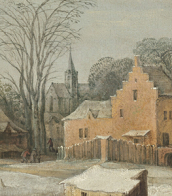

Joachim Beuckelaer, a masterful Flemish painter born around 1533, was renowned for his intricate market and kitchen scenes, which were abundant with detailed depictions of food and household items. His unique approach combined everyday life with religious narratives, often situating biblical episodes within the backdrop of bustling market scenes or domestic settings. This innovative blend of the mundane with the spiritual set the stage for future developments in Dutch and Flemish painting.
Beuckelaer's influence extended beyond his immediate geographic locale, impacting artists across Europe, from Italy to Spain, heralding a new appreciation for kitchen and market scenes that would flourish in seventeenth-century painting. His works were not only appreciated for their aesthetic and technical mastery but also for their ability to capture the essence of sixteenth-century Antwerp life, from the vibrancy of its markets to the intimacy of its kitchens.
His oeuvre includes a variety of subjects, from purely religious works to those that focus solely on still-life elements without any human figures, indicating his versatility and innovation as an artist. Beuckelaer was known for employing techniques that allowed him to efficiently reuse compositions, showcasing his ability to adapt and repurpose his work to meet the demands of his patrons.
Notable works by Beuckelaer, such as the "Four Elements" series, now housed in the National Gallery, London, demonstrate his skill in merging complex allegories with detailed observations from nature and daily life. These paintings are celebrated for their depth of detail and the way they foreground the role of women in the culinary and market spheres.
For collectors and experts in art and antiques, Joachim Beuckelaer's paintings offer a fascinating glimpse into the cultural and social dynamics of the sixteenth century, as well as the evolution of still-life and genre painting in the early modern period. His ability to weave together the secular and sacred, the abundant and the everyday, marks him as a significant figure in the history of art.
To remain informed about the latest discoveries, sales, and auction events related to Joachim Beuckelaer, consider signing up for updates. This subscription is an invaluable resource for those keen to explore the depths of Flemish painting and its enduring influence on European art history.
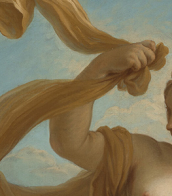
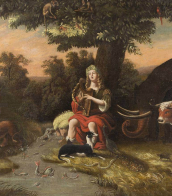
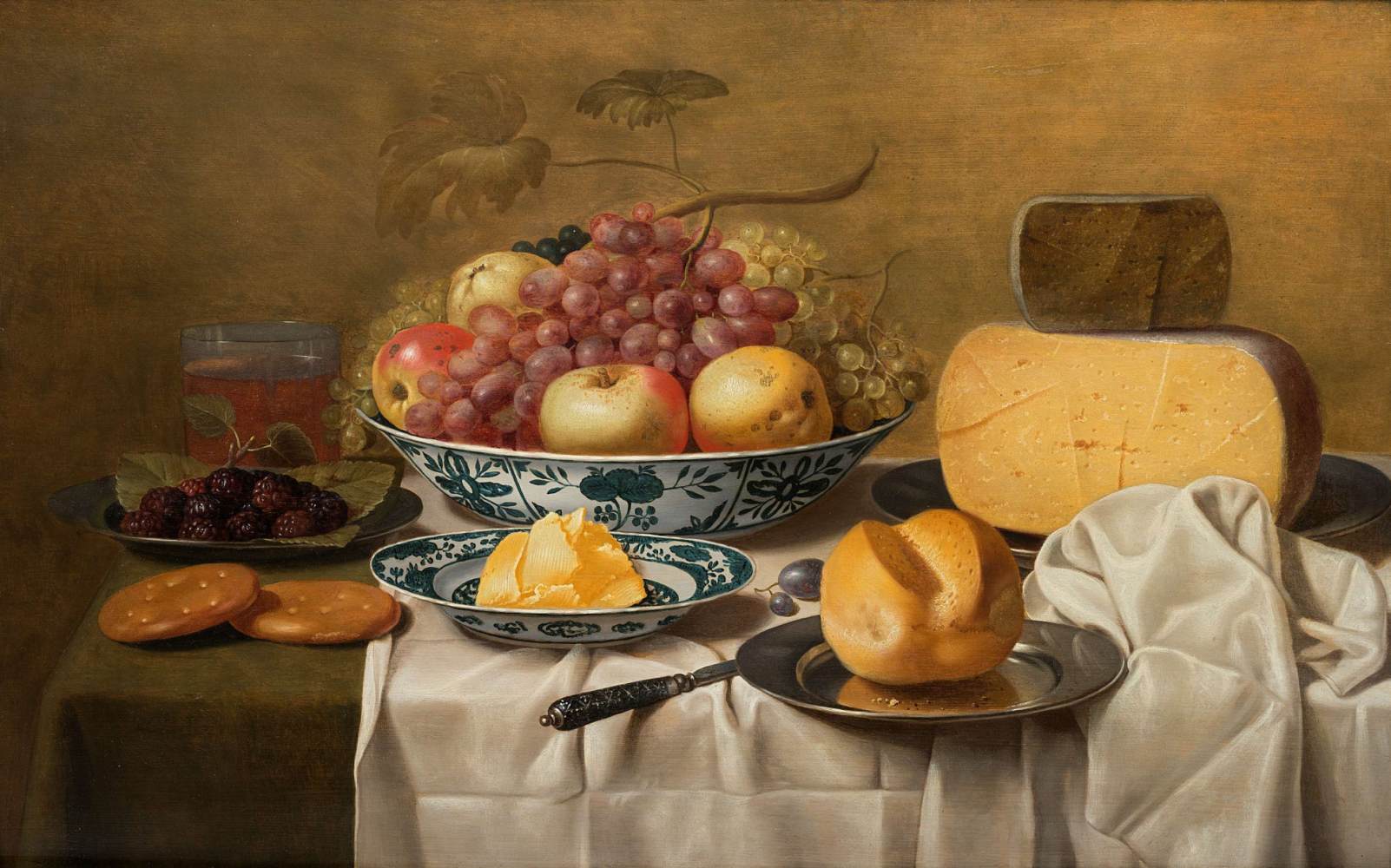
Floris Gerritsz van Schooten or Floris van Schooten was a Dutch painter who practised in a broad range of still life genres including breakfast pieces, fruit pieces, market scenes and large kitchen pieces.
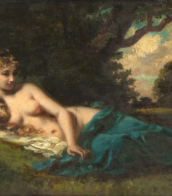
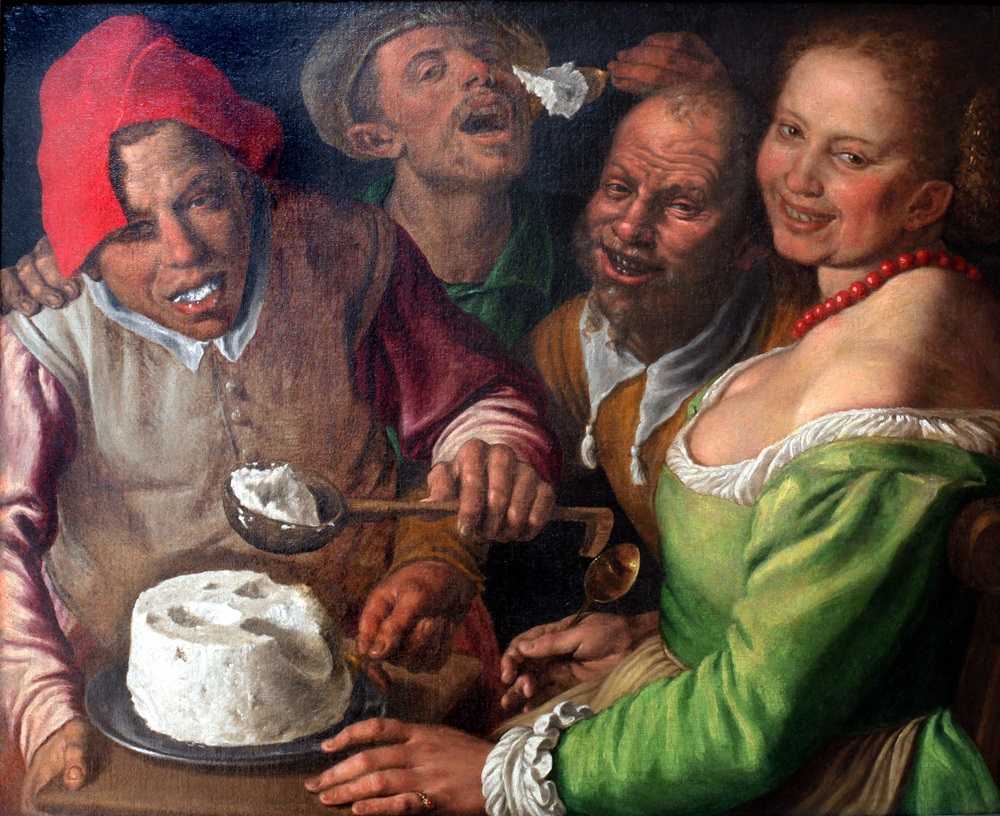
Vincenzo Campi was a notable painter of the 16th century, widely recognized for his unique style that combined traditional subjects with everyday life. Campi's journey in the world of art was influenced by his family background, as he trained under his brother Giulio and was part of a family of Italian painters known for their contributions to Mannerist painting.
Vincenzo Campi's paintings stood out for their vivid depictions of market scenes and kitchen tableaux, focusing on everyday objects and food with an extraordinary level of realism. This approach was quite innovative for his time. His works like "Pescivendoli" (The Fishmongers, 1579) and "The Ricotta Eaters" (1580) are emblematic of his style, combining elements of still life and genre painting. In "The Ricotta Eaters," for instance, Campi artistically weaves together themes of food and sensuality, presenting a scene that is both a hymn to life and pleasure and a subtle commentary on social classes and morality.
Vincenzo Campi's paintings were not just mere representations of daily life; they often carried deeper social and cultural meanings. For instance, in his depiction of the lower working classes in "Fishmongers," he illustrated contemporary beliefs regarding food's appropriateness based on social hierarchy. The paintings of commoners consuming foods like beans, dark bread, and cheese, as shown in "The Ricotta Eaters," reflected the societal norms of the time regarding class and diet.
Vincenzo Campi's work did not only portray the peasants in a crude or humorous light, but also carried a sophisticated blend of comedy and criticism, reflecting a deeper understanding of the human condition and social structures of his time.
Campi's style and themes influenced other artists in Cremona and contributed to the development of genre painting in northern Italy. His work, in some ways, served as a precursor to Caravaggio’s realism that emerged in the subsequent decade.
For collectors and connoisseurs of art and antiques, Vincenzo Campi's paintings offer a unique window into the societal and cultural aspects of 16th-century Italy, blending everyday life with deeper social commentaries. His work continues to be an important part of the conversation in the history of art.
To stay updated on the latest insights and collections of Vincenzo Campi's works, consider subscribing to our updates. This service will ensure you are informed about new sales, exhibitions, and auction events related to this influential Italian artist.



